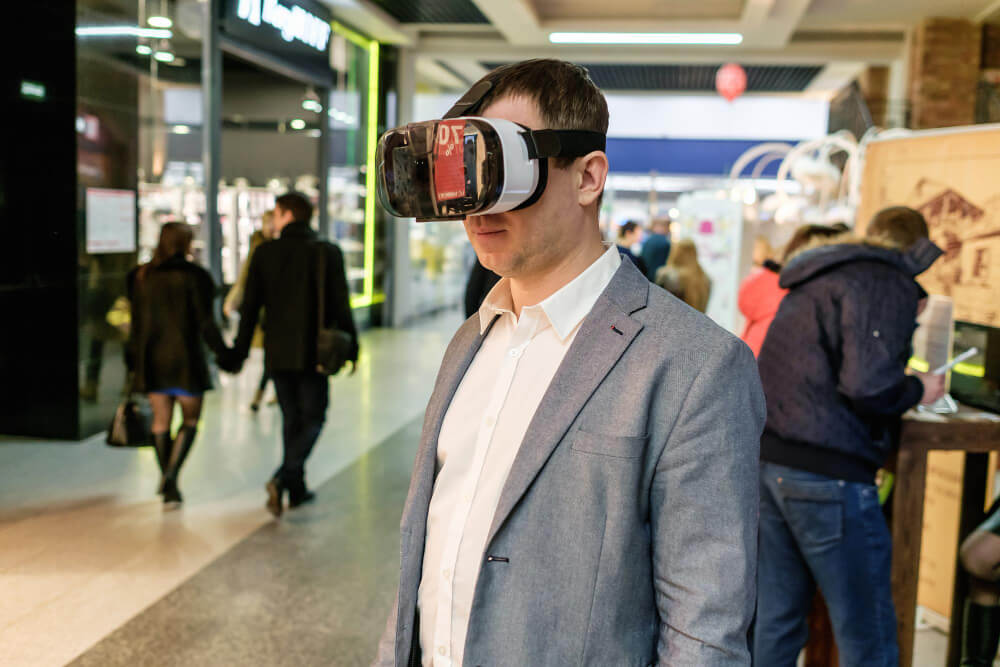The events industry continues to embrace innovation, and 2025 is no exception. This year, innovative technologies are establishing new benchmarks for the organization, perception, and assessment of events. These developments are changing the face of events, from improving attendee involvement to simplifying logistics.
Table of Contents
Technology Trends to Shape the Future Events
Here’s a detailed look at the top event technologies to watch in 2025.
1. Mobile Event Apps: A Crucial Event Tool
Mobile event apps continue to be a vital component of new event technology, developing into all-inclusive resources for both organizers and attendees. By 2025, event applications will incorporate AI-driven suggestions, customized agendas, and push alerts based on actual event dynamics, going beyond simple scheduling and reminders.
Participants may use interactive maps to find their way around locations, take part in real-time polls, and access materials such as session recordings and speaker biographies. Mobile event apps provide event planners access to real-time data on participant behavior, allowing them to make last-minute changes to enhance experiences. Event mobile apps improve convenience and engagement by consolidating data and communication into a single platform.
2. AI Matchmaking Technology and Event Networking: Create Connections
In 2025, AI-powered matchmaking systems are taking connections to the next level, and networking is still the major reason people go to gatherings. To suggest relevant connections, these platforms examine the aims, interests, and profiles of attendees. During hybrid events, networking technologies can recommend virtual meetups, pertinent group discussions, or one-on-one interactions using user-friendly algorithms. Every interaction has an effect thanks to features like video calls, integrated chat, and customized introductions, which increase the value of events for participants and stakeholders.

- Advanced Suggestions: AI examines the objectives, interests, and profiles of attendees to recommend the best candidates for networking events.
- Integrated Communication Tools: Connecting is quick and easy with built-in chat, video conference capabilities, and planned meetings.
- Post-Event Insights: Offers engagement metrics, follow-up reminders, and information on relationships formed for improved networking return on investment.
- Global Reach: Facilitates relationships across geographical boundaries, guaranteeing significant interactions between participants who are physically present and those who are not.
3. QR Codes: Enhanced Interactivity and Easy Access
QR codes are still essential for simplifying event experiences. By 2025, they can do more than just check-ins and tickets. Participants may take part in scavenger hunts, view interactive material, and receive special deals at sponsor booths by using QR codes. QR codes make it easier for event planners to track attendees and gather data, giving them information about booth visits, session popularity, and other topics. The adaptability of this new event technology guarantees a smooth and engaging event experience.
4. On-Site Badge Printing: A New Definition of Convenience
Long registration queues and pre-printed badges are things of the past. Upon arrival, guests may register and print their credentials instantaneously thanks to on-site badge printing equipment. This new event technology trend, which is integrated with registration systems, allows badges to be customized with names, QR codes, and even business logos. This guarantees flexibility for last-minute attendance or modifications in addition to easing logistical burdens. All participants get a favorable first impression because to the increased professionalism and effectiveness.

- Instant Badge Creating: Enables guests to sign up and print personalized badges as soon as they arrive.
- Customizable Designs: To further customization, add names, logos, QR codes, or session access information.
- Minimizes Lines: Quickens the check-in procedure, giving guests a more seamless entrance experience.
- Eco-Friendly Options: Complies with environmental objectives by supporting printing on recyclable materials.
5. Facial Authentication: Secure and Fast Check-ins
Face authentication is at the forefront of event check-in security and efficiency. Physical tickets or ID cards are no longer necessary because attendees may now register and enter events using their face biometrics. This contactless method reduces traffic jams at gates while improving security. The experience of attendees may be further enhanced by integrating facial verification systems with customized welcome messages or VIP area access.
6. Interactive Features and Gamification: Engage Attendees like Never Before
Gamification is an effective event technology for increasing attendance, and even more inventive applications will be seen in 2025. Gamification reinforces event themes and objectives while keeping attendees interested with interactive augmented reality games and leaderboard challenges. To boost participation, the organizers are incorporating interactive features like audience-voted prizes, digital scavenger hunts, and live quizzes. In addition to being enjoyable, these events promote networking and provide sponsors with more exposure.
7. Contactless Payment Technology: A Transaction Experience Without Friction
In event management, contactless payment technologies have become indispensable. Attendees may buy food, products, and other items using RFID wristbands, NFC-enabled cards, and mobile applications instead of cash or conventional credit cards. In addition to improving hygiene and cutting down on wait times, this event technology trend gives organizers useful sales data. Furthermore, contactless payments allow for easy connection with loyalty programs, providing participants with incentives and prizes.
8. Floor Mapping Navigation: Easily Navigate Attendees
Attendees sometimes find it difficult to navigate enormous venues, but floor mapping navigation technology in 2025 is making that change. Real-time directions to certain seminars, exhibitor booths, or amenities like dining places and bathrooms are provided using interactive digital maps that are available through event applications. By giving participants information about crowd density, these devices enhance event flow by enabling them to avoid crowded areas. Additionally, participants may effortlessly switch between back-to-back sessions or activities thanks to the navigation’s high degree of customization, which includes routes that are customized depending on specific timetables. In addition to being convenient, this new event technology trend promotes sustainability by decreasing the need for printed maps, which is consistent with contemporary eco-friendly methods.
9. AR and VR Technologies: Redefining Immersive Experiences
Augmented reality (AR) and virtual reality are revolutionizing how people experience events. Through AR, attendees may visualize various ideas, take part in interactive product presentations, and explore virtual overlays of sites. Conversely, virtual reality (VR) produces completely realistic settings that are perfect for online trade exhibitions, new product debuts, and team-building exercises. By 2025, AR and VR will be utilized to create shared experiences that improve inclusion and engagement by bridging the gap between participants who are physically there and those who are not. Additionally, sponsors may use these technologies as useful tools to present their products in creative ways.

10. Hybrid Events: The Best of Both Worlds
In 2025, hybrid events will still be quite popular as they provide a smooth fusion of virtual and real-world experiences. Remote participants may connect with in-person participants, engage with presenters, and watch live sessions. it is possible just because of advanced streaming technology. To guarantee that both audiences receive equal value, organizers are utilizing this event technology trend. The hybrid experience is improved by features like AI-driven analytics, virtual networking lounges, and real-time surveys. Hybrid events optimize reach and return on investment by serving both local and international audiences.
Final Words:-
The event technology landscape in 2025 is marked by innovation and transformation. These developments, which range from AI-powered networking to immersive AR/VR experiences are enhancing the way that events are organized, attended, and remembered. Event planners may enhance operations, offer memorable experiences, and provide more value to attendees and sponsors by using these new event technology trends.




